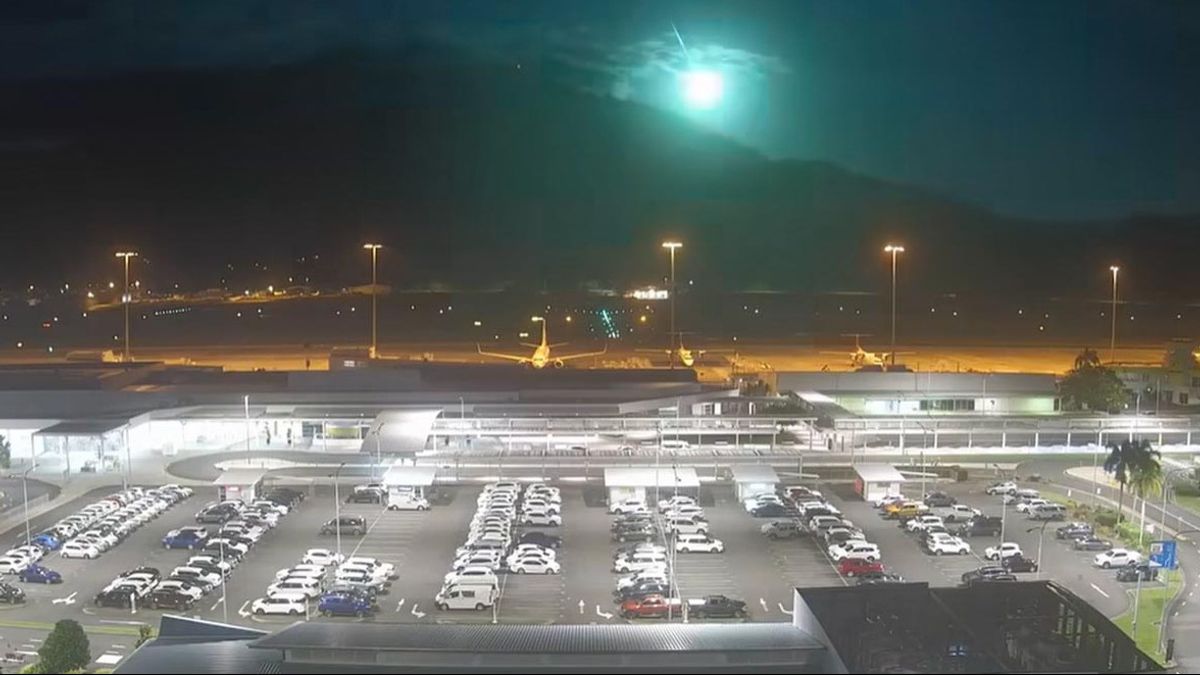JAKARTA - The sky in Queensland, Australia, at the end of last week was colored by the launch of a fireball followed by an explosion of blue, greenish light. It is claimed, this is a meteor.
The sky object was caught on a smartphone camera, security cameras and car dashboards of the city of Cairns on the east coast to Normanton in Carpentaria Bay. This phenomenon instantly went viral on social media at 9.22 Sunday night, May 21.
In a video recorded at Cairns Airport in Queensland, the meteor is seen causing the night sky to be green and then yellow. Residents in the small town of Croydon, about 500 km west of Cairns, explained on social media that they also heard a loud explosion.
Launching the NASA page, meteoroids are objects in space that vary in size from dust grains to small asteroids. Commonly dubbed space rocks.
When meteoroids enter Earth's atmosphere (or other planets, such as Mars) at high speed and on fire, fireballs or falling stars are called meteors.
An astrophysical expert at the Australian National University, Dr. Brad Tucker, said the rock was most likely between 0.5 and 1 meter in size, making it a small to average meteor.
Tucker stressed the possibility of the meteor moving up to 150,000 km per hour. Most of the meteors are made of chondrite rock, but the greenish color before the collision in this case is thought to have been caused by excess heat from iron shards and nickel when rocks burst before touching the ground.
Tucker added that the collision of a rock with Earth would not leave a crater. This is because the rock fragmented when it reaches the surface. Most of the rock will still freeze when it lands.
This is basically a stomach failure. The commotion piled up and caused the light to peak, causing a big flash and a sonic bang," Tucker said, quoted by The Guardian.
The sonic boom, explained Tucker, was a part to worry about with most meteors sliding to Earth.
"It was an explosion in the air, so if it happens in a populated area, it can cause damage," said Tucker.
"This one is small, but we are worried about a meteor measuring 10 meters, 20 meters," he added.
Scientists estimate about 48.5 tons of meteor material falls to Earth every day. Almost all matter evaporates in Earth's atmosphere, leaving a bright trail called falling stars.
Some meteors per hour can usually be seen on certain nights. Sometimes the number increases dramatically, this event is called a meteor shower.
The English, Chinese, Japanese, Arabic, and French versions are automatically generated by the AI. So there may still be inaccuracies in translating, please always see Indonesian as our main language. (system supported by DigitalSiber.id)








